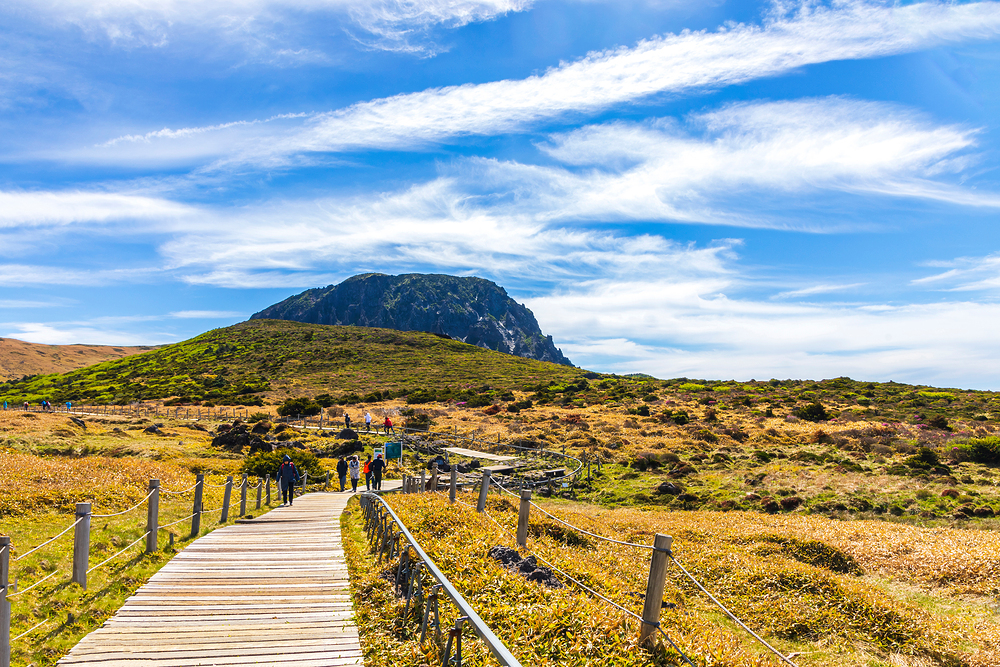
Seongsan Ilchulbong has long been considered one of the top scenic destinations in Korea. It attracts millions of visitors a year, many of whom climb to the top for the breathtaking panoramic view of the ocean, Udo Island, Hallasan Mountain, and the volcanic landscape of the east.
It was designated a Natural Monument on July 19, 2000 and subsequently recognized for its outstanding geological value by UNESCO on July 2, 2007, when it was added to the World Natural Heritage List. The peak was also named a Global Geopark Network site in October, 2010.

Hallasan Mountain lays claim to the title of South Korea's tallest mountain with the height of 1,950m above sea level. Home to a wide variety of vegetation, the mountain possesses immense scientific value and is a veritable treasure trove of animals and plants, leading to the designation of Hallasan Mountain Natural Reserve as Natural Monument 182 on October 12, 1966. In fall, when everything is blanketed by a colorful display of flowers, the mountain covered with the red color of the fall foliage is truly a sight to behold, while the snow-covered mountain in the winter stands out as the view to surpass all views. Hallasan Mountain was believed to have erupted 25,000 years ago, and the 360 or so volcanic cones surrounding the mountain present a unique view. Furthermore, the majestic figure of Hallasan Mountain rising from the middle of the mountain makes it appear as if it is carrying itself with a benevolent yet tenacious spirit.































